#Alan Goodman
Photo
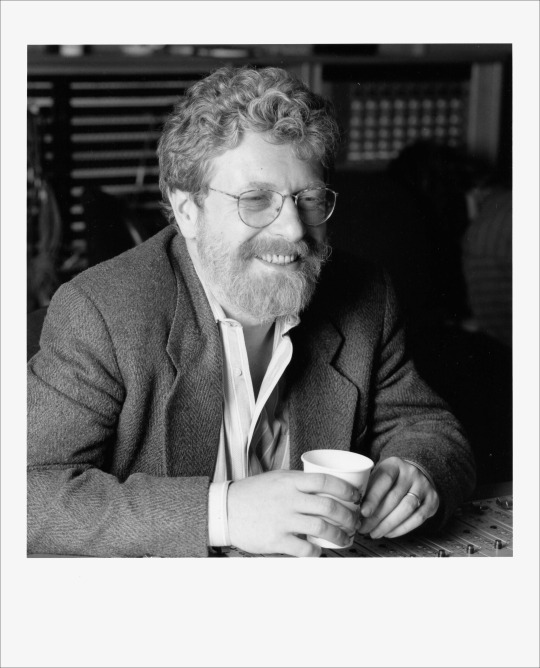
Michael Cuscuna, photograph by Jimmy Katz
Michael Cuscuna
Michael Cuscuna, one of my great inspirations and sometime collaborator, passed away this weekend (April 19, 2024) from cancer. Being a cancer survivor last year myself, when someone I’ve known and worked with for over 50 years it hit particularly hard.

Blue Cuscuna: 1999 promotional sampler from Toshiba-EMI [Japan]
Michael has been the most consequential jazz record producer of the past half century, a man who had not only a passion, but the relentlessness necessary to will the entire history of the music into being. Don’t believe it? Check out the more than 2600 (!) of his credits on Discogs. Substantial and meaningful he might have been, but to me, he was a slightly older friend who was always there with a helping hand. Hopefully, I was able to hand something back on occasion.
As I said when he answered “7 Questions” eight years ago: “I first encountered Michael as a college listener to his “freeform,” major station, radio show in New York, and was fanboy’d out when a mutual friend introduced us at [an] open rehearsal for [Carla Bley’s and Michael Mantler’s] Jazz Composer’s Orchestra at The Public Theater (MC has a photographic memory: “It was Roswell [Rudd]’s piece or Grachan [Moncur III]’s. You were darting nervously around the chairs with your uniform of the time – denim jean jacket, forgettable shirt and jeans.”) By 1972 or 73, he’d joined Atlantic Records as a producer, and since that was my career aspiration, I’d give him a call every once in awhile. He’d patiently always make time for my rambling and inane questions, and I never forgot his kindness to a drifting, unfocused, fellow traveler.
“...patiently always make time for my rambling and inane questions...” says a lot about Michael. His raspy voice could sometimes seem brusque, but ask anyone and they will tell you that he always made time to talk. Especially about jazz.
I desperately wanted to be a record producer and Michael was one of the first professionals I encountered. He had already produced my favorite Bonnie Raitt LP when somehow or other I bullied my way into his Atlantic Records office, where he was a mentee of the legendary Joel Dorn. Over the next few years, Michael was often amused at some of the creative decisions I made, but he was always supportive and even would sometimes ask me to make a gig when he couldn’t. When I spent a year living in LA, he invited me over to the studio while he was mining the history of Blue Note Records that would define his life for the next half century. I completely failed to understand what the great service to American culture he was about to unleash. Along with Blue Note executive Charlie Lourie, Michael’s research resulted in a series of double albums (”two-fers” in 70s speak), but little did the world know what was on Michael’s and Charlie’s minds.

The Cuscuna/Lourie Blue Note “Two-Fers” that ignited Mosaic Records
“I don’t think it’s generally understood just how imperiled the musical and visual archives of Blue Note Records were at one point, and just how heroically Michael stepped in to make sure this unparalleled American music survived for future generations. If you like jazz, you owe the man.” –Evan Haga
(Joe Maita does a great interview about Michael's career here.)
Fast forward a few years. The air went out of my record producing tires, I became the first creative director of MTV, I quit MTV and along with my partner Alan Goodman started the world’s first media “branding” agency. Leafing through DownBeat one day I saw an ad that started a new relationship with Michael that would last, on one level or another, for the rest of his life: the “mail order” jazz reissue label Mosaic Records.

Charlie Lourie & Michael Cuscuna at Mt. Fuji Jazz Festival, Japan 1987. Photograph by Gary Vercelli / CapRadio Music
Long story short, in 1982 Michael returned my check for the first two Mosaic releases with a note asking for some help. Initially, Mosaic wasn’t the sure fire, instant success Michael and Charlie had hoped for, did I have any ideas? I did, but no time to do anything other than make suggestions, we were busy trying to get our own shop off the ground. This cycle repeated itself for another couple of years when this time when Michael called he said Mosaic was on death’s door. Fred/Alan was in better shape, so Alan and I, on our summer vacation, came up with the first Mosaic “brochure,” convinced the guys we knew what we were doing (I’d read a few paragraphs in a direct mail book in a bookstore) and, with nothing to lose, Charlie and Michael took the plunge with us. Success! 42 years later, the former Fred/Alan and Frederator CFO at the helm, Alan and I always answer any call from Mosaic.

The first Mosaic Record box set 1983
There aren’t many people in the world like Michael Cuscuna. The world’s culture will miss him. I will miss him. Most of all, of course, his wife and children will miss him.
youtube
#Michael Cuscuna#Mosaic Records#Alan Goodman#Blue Note Records#RIP#Carla Bley#Michael Mantler#Jazz Composer's Orchestra#producing Records#producingrecords#jazz#mentors
4 notes
·
View notes
Photo
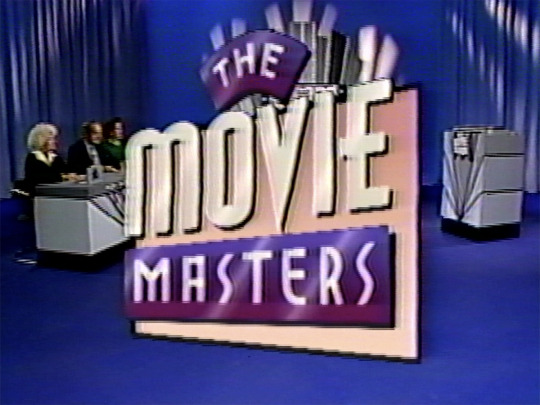

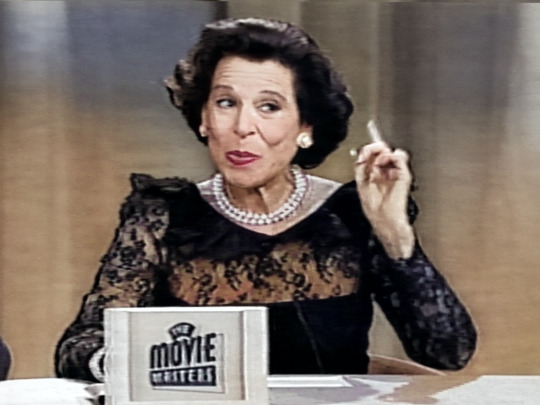

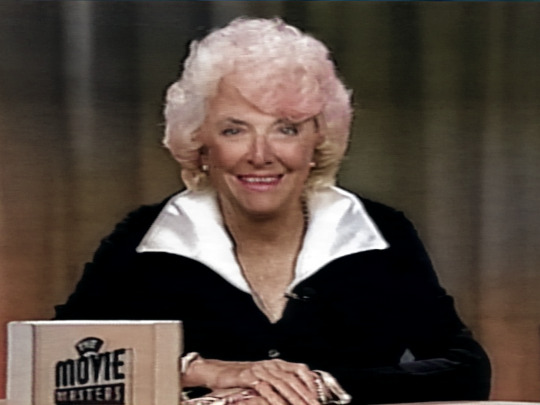
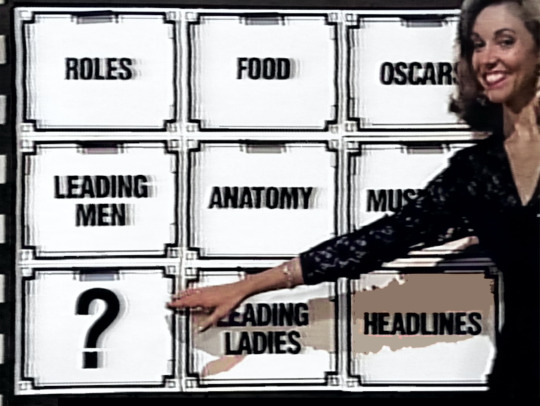


The Movie Masters!
for American Movie Classics 1989
Albie Hecht (executive producer & co-creator): “My favorite!”
Christine Ecklund (producer/writer): “Wow. Bet I can still answer every question. (“Ucipital Mapilary”)“
Before Mad Men, before Breaking Bad and The Walking Dead, AMC was actually “American Movie Classics,” the Turner Classic Movies of its time, a cable channel exclusively focused on, duh, movies from the heyday of Hollywood. (In fact, the former head of AMC programming created TMC.)
Towards the end of the 80s, channels that relied on acquired, cost efficient stuff like AMC (or Nick-at-Night or USA or even MTV) were realizing that advertisers and cable operators were on the hunt for programming that could excite viewers.
The Movie Masters was one of AMC’s first jump into the pool, and obviously, it wasn’t the approach that worked like crazy for them. Fred/Alan’s primary Showtime client, Josh Sapan, had become AMC’s leader and thought that our Chauncey Street Productions had an idea for a network series.
Original television production, even when it’s done efficiently, is pretty expensive. And the explosion of cable TV had exploded in terms of dozens of channels, but it was still trying to figure out how to make enough money to thrive. The financial picture wouldn’t really come into it’s own until the end of the 1990′s. All the networks we worked with over the years approached originals very gingerly, and American Movie Classics was one of the most, um, fiscally careful.
Well, Chauncey Street was a perfect fit for a deliberate situation. We were still feeling our way in series production and we were well aware we weren’t yet booking the big gigs.
Chauncey Street majordomo Albie Hecht loved game shows (CSP went on to produce Turn It Up! for MTV, Kid’s Court and GUTS for Nickelodeon, and Albie oversaw many more as president of Nickelodeon production). He and Alan created the idea for The Movie Masters, with the notion that it would recreate the salad days of broadcast network quiz shows.
To that end we ran dozens of casting calls at our office, talking to everyone from Betty Comden and Margaret Whiting, before coming to the conclusion that we’d replicate a classic quiz show line up (American Movie Classics, right!). The production landed on The Match Game’s Gene Rayburn as host, and actress and veteran quiz panelist Peggy Cass, New York Times’ theater critic Clive Barnes, and actress and To Tell the Truth stalwart Kitty Carlisle as contestants.
The production came off with only a few hitches and delivered on time and on budget. It was a hoot working with such revered acting, writing and television royalty. AMC would eventually find their way to “prestige” TV, but as far as we were concerned, we did a wonderful job in the name of the greatest movies of all time.
.....
Chauncey Street Productions, New York
Created by Albie Hecht & Alan Goodman
Producer/writer: Christine Ecklund
Executive Producers: Alan Goodman, Albie Hecht, Fred Seibert
Three of the original episodes of "The Movie Masters"
youtube
#AMC#American Movie Classics#Josh Sapan#The Movie Masters#1989#Chauncey Street#Albie Hecht#Alan Goodman#Fred Seibert
2 notes
·
View notes
Photo
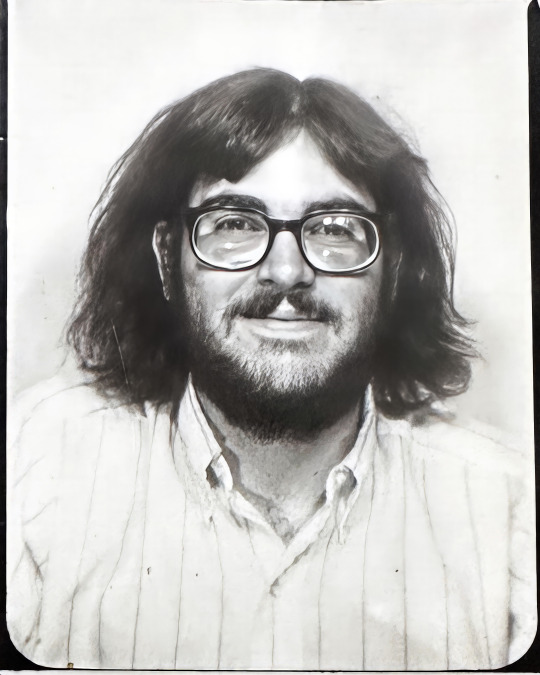
Alan Goodman, photobooth 1970's
Alan saved the day.
”Jazz Ain’t Nothin’ But Soul” Part 2 (Part 1 here)
TThrough some dumb luck and a belief in our artist, Oblivion almost had a hit with “Jazz Ain’t Nothin’ But Soul.” To my ears, and on Van Jay’s mainstream jazz show on WRVR-FM in New York, Joe got it just right, a performance that hit it better than Betty Carter’s original or any others, with an exuberance and joie de vivre that let anyone listening that jazz was... it!
youtube
But, I had completely screwed up.
Sure, Van was playing the track like crazy, and the rest of the RVR jocks followed. We were getting calls from retailers throughout the New York metropolitan area, they wanted to record! Yay!
Nooooo!!!!! The record I’d delivered to the radio station was a test pressing! The only copy we had. And, to add insult to injury, Oblivion was pretty much broke. I was just out of college without a job, Tom Pomposello ran a small record store that gave him enough money to shelter his young family, and Dick Pennington –our initial financial savior– didn't have any more resources for us.. We had the test pressing, but we hadn’t OK’d the pressing order at the plant because we couldn’t pay for it!
My buddy Alan Goodman stepped in and saved the day. He provided us with some cash from an inheritance. What a friend. He was pretty much living hand to mouth himself, but after he bought himself a 16mm movie camera –Alan was in film school– he gave me the rest. It enabled us to make the pressing order.
(I never paid Alan back directly. But, I tried to make up for it, working at MTV together, changing the way people used TV in the cable era. We eventually become partners in the world’s first media branding company, and becoming brothers-in-law and lifetime friends!)
We eventually got the records, sent them to retail, but... it was too late. We’d missed the window.
I made a total rookie error. “Jazz Ain’t...” became a classic “turntable hit.” It deprived Joe –and Oblivion– of a real hit, the only one he’d have in his career. I’ve never forgiven myself, Joe deserved better.
0 notes
Photo


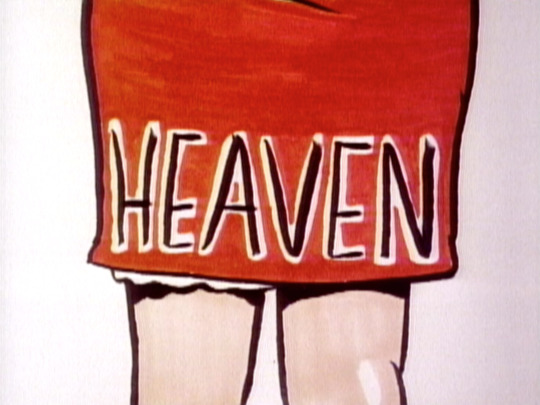
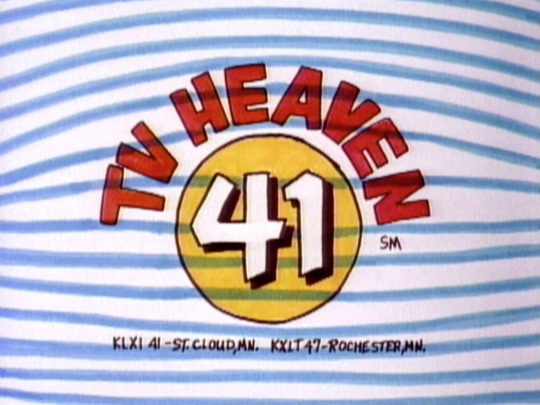




Network Branding 1988-1990
The Best of Original Cartoons
TV Heaven and HA! TV Comedy Network
Fred/Alan, Inc. New York
For a quick minute in the late 1980s, Nickelodeon's ad sales group could not sell Nick-at-Nite advertising ("no one wants black and white reruns!"), so they decided they'd promote themselves as a comedy network.
So, my Fred/Alan partner Alan Goodman and I brought our original idea of TV oldies to a broken down UHF channel in St.Cloud, Minnesota, and renamed Channel 47 "TV Heaven." We got more publicity in three weeks than Nick-at-Nite got three years. Nick-at-Nite parent MTV Networks threatened to fire us from all their networks and we had to resign TV Heaven.
But not before we made some awesome station identifications with our indie animation friends.
In 1990, MTV Networks revived the idea of an all comedy network in a panic after HBO launched the Comedy Channel. Fred/Alan convinced MTVN to brand theirs as HA! The TV Comedy Network, and we went to work.
(Neither The Comedy Channel or HA! succeeded and they merged, Fred/Alan named the venture "Comedy Central" and the rest is comedy television
history.)
.....
Creative directors: Alan Goodman & Fred Seibert
Producer: Tom Pomposello
Logo design: Noel Frankel
.....
TV Heaven station identifications 1988
Production companies: International Rocketship,
Vancouver BC; Fred Mogubgub, NY.
. . . . .
HA! network identifications 1990
Production companies: Lou Brooks & Jerry Lieberman,
NY; Charlex, NY; International Rocketship, Vancouver
BC; (Colossal) Pictures, SF; Marc Karzen, NY.
.....
Pages 256-259 “The Best of Original Cartoons-Produced by Fred Seibert”
#7 The FredFilms Professional Library (Amazon)
#Best of Original Cartoons#HA!#TV Heaven#1988#1989#1990#Alan Goodman#tom pomposello#noel frankel#Fred/Alan#Fred Mogubgub#Marv Newland#International Rocketshi[#lou brooks#Jerry Lieberman#Charlex#Mark Karzen#The FredFilms Professional Library
1 note
·
View note
Text
If you wanna be profound
If you really gotta justify
Take a breath and look around
A lot of folks deserve to die!
Levi Stubbs, Rick Moranis - Feed Me (Git It)

#Levi Stubbs#Rick Moranis#Miles Goodman#Alan Menken#Little Shop of Horrors#80s#musical#soundtrack#film soundtrack#Audrey 2#Audrey II#motown#fusion#big band#to2lly not tunes#Spotify
17 notes
·
View notes
Text
youtube
8 notes
·
View notes
Text

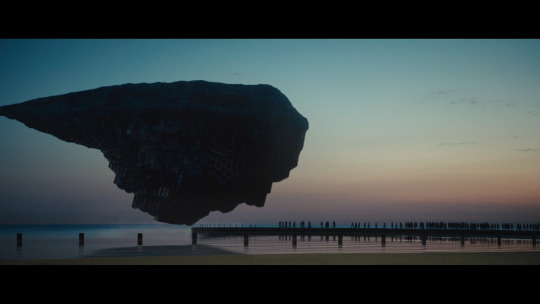


Captive State (2019) directed by Rupert Wyatt
Been putting off watching Captive State for years after it got a lot of negative reception.
I loved it and I'm baffled by a lot of the complaints I've read in old threads. I'm convinced these people fell asleep during the movie or something.
Highly recommended if you like District 9 and slow-burns. Also the soundtrack is fantastic.


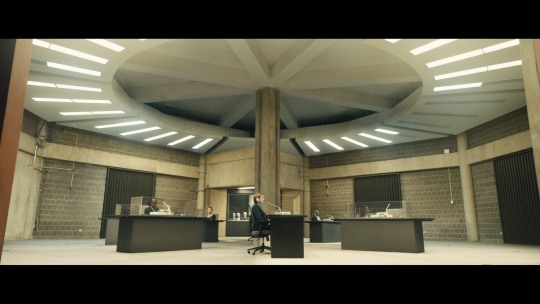

#Captive State#2019#Rupert Wyatt#Erica Beeney#Alex Disenhof#Rob Simonsen#John Goodman#Ashton Sanders#Jonathan Majors#Colson Baker#Vera Farmiga#Kevin Dunn#Alan Ruck#Kevin J O'Connor#James Ransone#Ben Daniels#sci fi thriller#sci fi film#sci fi movies#District 9#movie photography#movie screenshots#film#movies#cinema#cinephile#movie stills#film screencaps#film screenshots#atmospheric
9 notes
·
View notes
Text

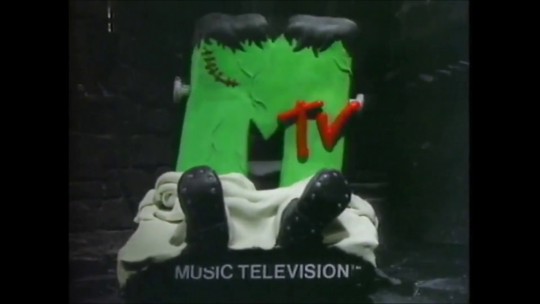

August 1, 1981
#mtv#music television#cyndi lauper#nina blackwood#alan hunter#mark goodman#martha quinn#jj jackson#80s
14 notes
·
View notes
Photo

Click here for my posts about MTV and here for Fred/Alan’s MTV work.
The first MTV poster. Summer 1981.
I’ve been searching for this poster (or at least a file of it) for almost 20 years. It was the first poster we did for MTV in the summer of 1981, and maybe because it was in a somewhat outdated style it sort of got sidelined and I didn’t save it.
We were so late in finalizing the MTV logo pretty much all of the promotional merchandise that we put together to promote ourselves to record companies, music managers, advertisers and cable operators (and of course, ourselves) were rushed. Consequently, even though our logo animations were leading the channel into what became our loose, illustrative design style for MTV’s first few years, the earliest stuff was a bit of a hodge podge that we thought might work.
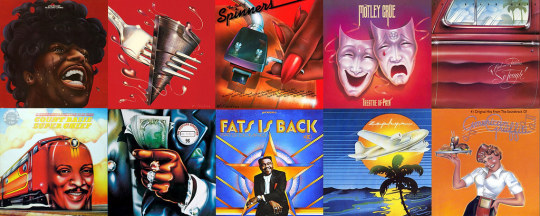
Artist David Willardson led the 70s California based music business through an innovative era by reviving the airbrush and using it to give a unique spin to 12″ vinyl album covers, which had generally been either photography of the musicians or abstract illustrations. By the end of the decade it was the cool way to showcase music. By 1980 he’d partnered with artist Charles White III in the Willardson+White studio in Los Angeles.
Around the time we started thinking about MTV, Manhattan Design –Pat Gorman, Frank Olinsky and Patti Rogoff– had started their studio in the spare room behind a tai chi studio above Bigelow Chemists in New York’s Greenwich Village. I’d grown up with Frank and one thing led to another and we hired the team to design our logo. 500 tries later not only did we have the ‘M’ we had our main designers for the first several years of the network.
Because of the speed at which we needed to ramp up once we settled on the logo weeks before our August 1, 1981 launch led to a lot of creative decisions that would have little effect on the overall approach we’d eventually take to design on the channel.
This poster, which fit into the prevailing record business of the past decade, would really be in complete opposition to my thinking for our channel. Which was, simply put, that MTV: Music Television needed to be the leader of the music biz –hell! the entire culture!– MTV needed to be what was next. It’s a great poster, a wonderful illustration, to be sure (well, I probably would’ve left off the artists; within about a month after our debut, most of them would be yesterday’s news). But, if you take a look at some of our other work, you might agree that with this piece we definitely hadn't become “next.” Yet.
PS: This poster led to one really stupid design decision on my part which plagued the production groups for several years. In my attempt to be organized and professional with respect to design, I took a cue from this poster’s type design, a variation of the Kabel family of typefaces. I insisted that all our on-air typography use Kabel, taking the choice out of individual designers. The typeface wasn’t really suitable to early 1980s television technology, but I insisted. Dumb!
.....
Credits:
Art direction: Manhattan Design
(Pat Gorman, Frank Olinsky, Patti Rogoff)
Airbrush illustration: Mick McGinty for Willardson+White
Creative Direction for MTV: Fred Seibert & Alan Goodman
Click here for my posts about MTV and here for Fred/Alan’s MTV work.
.....
…::: Addendum (July 7, 2023): I thought Manhattan Design had originally told me this poster illustration was done by Charles White III of Willardson+White. Through some research that I didin’t pay attention to –that is, I never looked carefully at the credits at the bottom right of the poster!– it turns out the artist was actually Mick McGinty.
So, I reached out to Mick’s website and got this note back from his son Jobey:
Hey Fred...we actually still have the original, and I have a print hanging in my home studio. It's one of my absolute favorites that Dad did, myself being a guitar player as well.
I would love more information on it if you have some, and I will gladly send you photos of the original. Dad had it hanging in his studio for about 20 years, but then it hung in my bedroom during high school, until I moved out and it went back to his studio. While I was in high school, Dad was offered a pretty large sum for it...he said I could use the money to go to college, haha, but I lacked some ambition and decided to keep it...and this was in 1996 or 1997.
Most of Dad's illustrations are going to go to Heritage Auction in August [2023].
So glad to hear from you and meet you...anytime I get to have contact with someone that my Dad worked with it's always a huge gift and blessing to me. Jobey
My response:
Oboy! What a nice note, thanks so much!
As it turns out, persistence is a quality that can work out once in a while. I found the poster on a rare rock poster site from Germany, of all things. It got sent to me right as I came down with a serious medical condition, and now that I'm OK, I'll be able to finally open the box!! Looking forward to getting it linen backed and framed.
I'll tell you what I know of the poster, given that I was the client rather than the commissioner, Hope it's helpful.
I was the original creative director at MTV. About a year before we launched on August 1, 1981, my creative partner (eventually, my business partner) Alan Goodman and I commissioned Manhattan Design to create a logo for the channel-to-be. (Actually, I went to my childhood friend, Frank Olinsky, who had been a fantastic artist since I met him at 5 years old, and not for nothing, a lifelong music fanatic. He'd just started a design collective with two others, Pat Gorman and Patti Rogoff, and the assignment broadened to their firm. Which, by the way, was housed in a storage room behind a tai chi studio above Bigelow Chemists, on Sixth Avenue in Manhattan.) It took at a year of over 500 comps before we were satisfied with the eventual, final logo.
The final corporate approval of the design went on way too long and by the time we asked Manhattan Design to come up with our launch poster (mostly for the cable operators we needed to put the channel on their systems, and advertisers we needed to give us their money to survive). Frank thought Willardson+White would be the right shop for the illustration (Frank himself was a fantastic illustrator, kind of out the Seymour Chwast style, but he had become sick of his own work and preferred designing) –after all, airbrush was the most exciting thing to happen to 70s album design, and pop design in general– and after they sketched out a comp, you dad did the fabulous work.
Honestly, until I stumbled upon the information that your father illustrated the poster, I was completely in the dark about it. I think Manhattan Design told me it was Charlie White who did it, but maybe I misremember, or possibly they told me a name they thought would impress me.
After the poster was printed (in a very small quantity) we went on to the main work of the channel. Personally, I was interested in moving past the styles of the 70s, not just in album design, but in animation design too. My boss wanted everything to look "modern," by which he meant the kind of Star Wars style of computer controlled animation and, of course, the airbrush kind of thing. I loved both of those things, but I felt like MTV needed to forge its own path, and not follow anything else. How would we be considered special if we were followers? When he said "Star Wars" I blurted out I wanted us to look like Gumby –claymation– and convinced him we couldn't afford the more expensive stuff (claymation was way out of the mainstream by the 80s, and I let him know that the studios needed the work and would do stuff for us at a budget more in line with what we could afford).
Bob Pittman –my MTV boss– left us alone, creatively and it gave us a chance to work on Frank to do our work in a more flat illustrative direction; he could execute that personally. Reluctantly, and given the startup budgets we were working with at the beginning –it took several years for the channel to be financially successful– Manhattan Design steered us right into the pocket I was looking for, and it helped make us famous during the first decade.
Anyhow, that's what I know. If there's anything else you're curious about lemme know, it'll probably ping my brain to things I've forgotten.
Take care, sincerely, Fred
#posters#MTV#1981#illustration#MTV design#Manhattan Design#graphic design#David Williardson#Willardson+White#Mick McGinty#MTVposts#Bob Pittman#Alan Goodman
5 notes
·
View notes
Photo

Michael Cuscuna by Jimmy Katz
Michael Cuscuna R.I.P. 1948-2024
Our fantastic friend, then client, Michael Cuscuna, record producer/historian extraordinaire and co-founder of Mosaic Records, passed away on April 19, 2024. Both of us –Alan and Fred– wrote remembrances that we’re reposting here.
.....

Michael Cuscuna by Thomas Staudter
I knew the voice of Michael Cuscuna before I ever met the man. Growing up in an area of New Jersey where we could pull in both New York and Philadelphia stations, I would listen to him DJ at WMMR out of Philly. He had a quintessential FM DJ voice — soft-spoken, intimate, gravelly, authoritative. He didn’t yammer on, but I remember he was clever and his sense of humor was dry as a bone. He played a mix of progressive rock and some things that clung to the precipice of musical genres.
Years later our paths merged. I started seeing his name on the backs of albums I’d play on my college jazz radio show — now I was the DJ, and he had become a prolific producer, supervising dates for a diverse list of artists, including many dedicated to the avant garde. He also produced for Bonnie Raitt and other groundbreaking musicians. I am searching my memory in vain to recall how we became connected, but he was also creating a monthly promo disk sent to radio stations by Crawdaddy Magazine and I became his producer, using the free facilities of the college station to record and edit. He would collect the interview tapes from the magazine’s feature writers, I would edit them into a coherent radio show, then he would come in and record his host segments. Out of that association, I started writing reviews for Crawdaddy of new jazz releases. He was as wickedly funny in person as I remembered him on the radio. I was a little in awe of his extraordinary knowledge of music — an artist’s historical significance, how a musician’s style linked that person to the artists that came before and after, and why certain artists deserved more recognition than they had received by the public. He turned me onto a lot of music. I think we did the show for a couple of years.
More time passed, and Michael came into my life again through my partner at our media advertising agency, Fred/Alan. By now, Michael had established himself as an important compiler of jazz reissues that went above and beyond what was typical at the time. Starting with Blue Note Records, but ultimately including the libraries of other labels, he’d go into the vaults and unearth the unreleased sides and alternate takes and place them alongside the more well-known songs. His two-fer series for Blue Note was particularly noteworthy. On the back of that success, he and a former Blue Note executive named Charlie Lourie created Mosaic Records. Their concept was to do numbered, limited editions in luxurious box sets aimed at the collector market. Initially vinyl only, they switched to CDs when that was the prevailing release format. The boxes were gorgeous, each with a booklet filled with photos, an essay by a prominent jazz historian, and absolutely accurate discographical information. They specialized in “complete” collections depending on the frame they decided was relevant. That frame might have been the three-day recording binge from 1957 by organist Jimmy Smith that resulted in enough material for three CDs, the unreleased complete recordings of Charlie Parker’s live solos recorded by Dean Benedetti, or the complete Capitol recordings of the Nat King Cole trio, a box that weighed-in at 18 CDs. They were sold only through the mail, direct to consumers. But they weren’t reaching the market and needed help. In an earlier era, my partner Fred Seibert had attached himself to Michael to learn as much as he could about producing records. Knowing the two of us, Michael asked if we could come up with a direct marketing campaign. In our typically arrogant belief that we knew how to do almost anything or could figure it out, we said yes.
We began producing a catalog that was mailed out to jazz enthusiasts, slowing building a list of devoted listeners and buyers. My job was to write that catalog. We dissolved the advertising agency in 1992, and mailed catalogs gave way to internet promotion, but I continued writing the sales copy for each release, save one or two that I didn’t do for reasons lost to time. I just wrote one last month for an upcoming set featuring vibraphonist Bobby Hutcherson.
I developed a format for my essays. I started with some thesis about why that artist deserved more recognition, or why the music from that era was crucially important — in other words, why you absolutely had to own that collection. I segued into a couple paragraphs of biography, followed by a few paragraphs where I singled-out important tracks or tried to convey in words the feeling, the sound, the artistry of the musician. I wrapped it up with more “don’t delay” language. In all those years, each and every time I approached a new assignment I had two thoughts crowding my mind — will Michael agree with my thesis? Will Michael take issue with the way I chose to describe the music? Each package gave me an opportunity to do a deep dive into the music, but I knew I didn’t have Michael’s personal connection to many of the artists, or his historian’s perspective on the music. And by the way, he was himself a damn good writer. It never stopped thrilling me when he’d send back an email merely correcting a calendar date, or the number of unreleased tracks, with a message that he thought it was otherwise perfect. More than anything I wanted to impress and satisfy Michael. I was alway so happy that I could.
I think they had done four releases when we got involved in 1984. The company is closing in on 200 box sets. I can’t believe it’s been a 40-year association.
We lost Charlie more than 20 years ago. This weekend, Michael passed after a long illness. I will miss his husky laugh, his personal stories about the musicians we both obsessed over, and the gratitude he expressed each time I turned in an assignment.
To many, his name was a name on the back of an album jacket. To those of us who knew him, we know him as someone who single-handedly rescued the Blue Note archive and other treasures from oblivion, who introduced us to overlooked artists such as saxophonist Tina Brooks, and who demanded we take a second look at music that was significant and mind-blowing. As a colleague, as a client, but mostly as a music lover, I am forever in his debt. My sympathies to the family of this enormously important figure in music. RIP Michael Cuscuna.
–Alan Goodman (repost from Facebook)
.....
Michael Cuscuna, photograph by Jimmy Katz
Michael Cuscuna
Michael Cuscuna, one of my great inspirations and sometime collaborator, passed away this weekend (April 19, 2024) from cancer. Being a cancer survivor last year myself, when someone I’ve known and worked with for over 50 years it hit particularly hard.
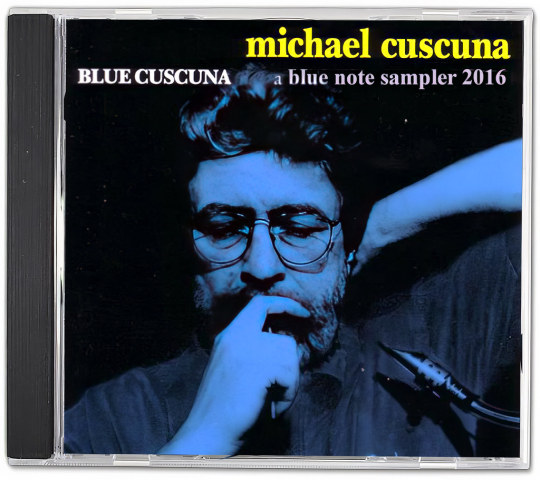
Blue Cuscuna: 1999 promotional sampler from Toshiba-EMI [Japan]
Michael has been the most consequential jazz record producer of the past half century, a man who had not only a passion, but the relentlessness necessary to will the entire history of the music into being. Don’t believe it? Check out the more than 2600 (!) of his credits on Discogs. Substantial and meaningful he might have been, but to me, he was a slightly older friend who was always there with a helping hand. Hopefully, I was able to hand something back on occasion.
As I said when he answered “7 Questions” eight years ago: “I first encountered Michael as a college listener to his “freeform,” major station, radio show in New York, and was fanboy’d out when a mutual friend introduced us at [an] open rehearsal for [Carla Bley’s and Michael Mantler’s] Jazz Composer’s Orchestra at The Public Theater (MC has a photographic memory: “It was Roswell [Rudd]’s piece or Grachan [Moncur III]’s. You were darting nervously around the chairs with your uniform of the time – denim jean jacket, forgettable shirt and jeans.”) By 1972 or 73, he’d joined Atlantic Records as a producer, and since that was my career aspiration, I’d give him a call every once in awhile. He’d patiently always make time for my rambling and inane questions, and I never forgot his kindness to a drifting, unfocused, fellow traveler.
“...patiently always make time for my rambling and inane questions...” says a lot about Michael. His raspy voice could sometimes seem brusque, but ask anyone and they will tell you that he always made time to talk. Especially about jazz.
I desperately wanted to be a record producer and Michael was one of the first professionals I encountered. He had already produced my favorite Bonnie Raitt LP when somehow or other I bullied my way into his Atlantic Records office, where he was a mentee of the legendary Joel Dorn. Over the next few years, Michael was often amused at some of the creative decisions I made, but he was always supportive and even would sometimes ask me to make a gig when he couldn’t. When I spent a year living in LA, he invited me over to the studio while he was mining the history of Blue Note Records that would define his life for the next half century. I completely failed to understand what the great service to American culture he was about to unleash. Along with Blue Note executive Charlie Lourie, Michael’s research resulted in a series of double albums (”two-fers” in 70s speak), but little did the world know what was on Michael’s and Charlie’s minds.

The Cuscuna/Lourie Blue Note “Two-Fers” that ignited Mosaic Records
“I don’t think it’s generally understood just how imperiled the musical and visual archives of Blue Note Records were at one point, and just how heroically Michael stepped in to make sure this unparalleled American music survived for future generations. If you like jazz, you owe the man.” –Evan Haga
(Joe Maita does a great interview about Michael's career here.)
Fast forward a few years. The air went out of my record producing tires, I became the first creative director of MTV, I quit MTV and along with my partner Alan Goodman started the world’s first media “branding” agency. Leafing through DownBeat one day I saw an ad that started a new relationship with Michael that would last, on one level or another, for the rest of his life: the “mail order” jazz reissue label Mosaic Records.
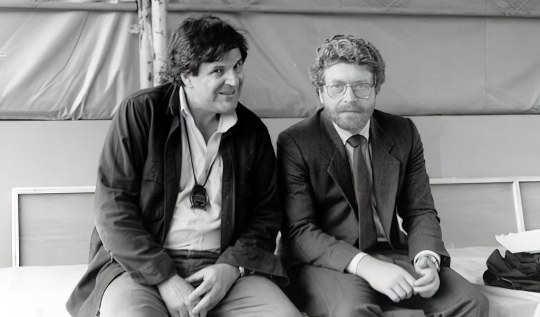
Charlie Lourie & Michael Cuscuna at Mt. Fuji Jazz Festival, Japan 1987. Photograph by Gary Vercelli / CapRadio Music
Long story short, in 1982 Michael returned my check for the first two Mosaic releases with a note asking for some help. Initially, Mosaic wasn’t the sure fire, instant success Michael and Charlie had hoped for, did I have any ideas? I did, but no time to do anything other than make suggestions, we were busy trying to get our own shop off the ground. This cycle repeated itself for another couple of years when this time when Michael called he said Mosaic was on death’s door. Fred/Alan was in better shape, so Alan and I, on our summer vacation, came up with the first Mosaic “brochure,” convinced the guys we knew what we were doing (I’d read a few paragraphs in a direct mail book in a bookstore) and, with nothing to lose, Charlie and Michael took the plunge with us. Success! 42 years later, the former Fred/Alan and Frederator CFO at the helm, Alan and I always answer any call from Mosaic.

The first Mosaic Record box set 1983
There aren’t many people in the world like Michael Cuscuna. The world’s culture will miss him. I will miss him. Most of all, of course, his wife and children will miss him.
youtube
0 notes
Photo
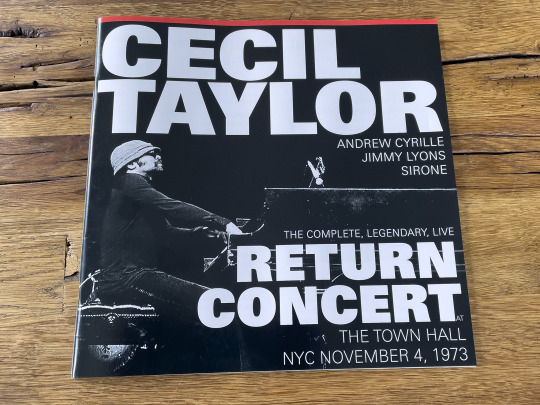


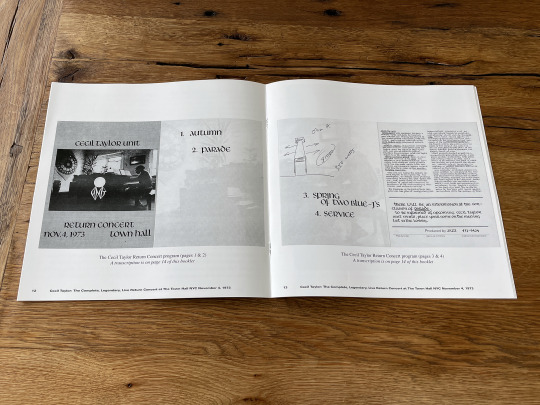

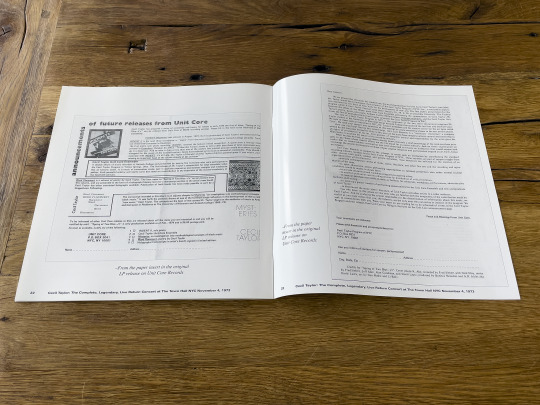
Cecil Taylor. Crying “Uncle!”
Even though the “liner notes” are posted here (with a downloadable PDF), so many people have asked for a physical copy, I’m crying “Uncle!”
Most of the reviewers seem to have an allergy to digital so we made up a few promotional-only CDs and booklets for Alan Goodman’s notes. I suppose they were sharing them with their friends, the friends emailed, so we’re relenting.
Run on over to the Oblivion Records Bandcamp page, press the merch link at the upper left, and you’ll be brought to the page where you can purchase your very own copy.
Included in the booklet you’ll find...
Twenty-four 10”x10” glossy pages, illustrations in black & white and color.
The album cover photograph by admired Library of Congress photographer David Spitzer.
Alan Goodman’s 3,000 word essay.
20 illustrations, including…
Cover, back liner, original inserts with Cecil Taylor’s poetry, album labels and recording tape boxes from “Spring of Two Blue-Js,” the 1974 Unit Core vinyl LP release of the second half of “The Return Concert.”
“The Return Concert” program given to all attendees at The Town Hall and the single newspaper advertisement for the show.
Reproductions of key Cecil Taylor albums.
For as long as supplies last, we’ll send out orders once a week and then you can reach out and touch... Cecil Taylor: The Complete, Legendary, Live Return Concert at The Town Hall NYC November 4, 1973.”
#Cecil Taylor#notes#Alan Goodman#Bandcamp#The Return Concert#OD8#OD-8#jazz#Avant-Garde Jazz#avant-garde#booklet#Return Concert#free jazz
0 notes
Photo


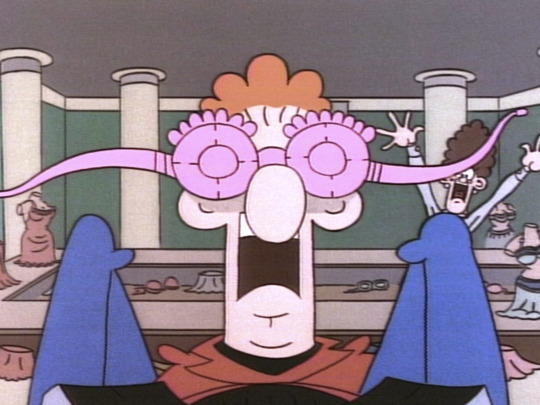



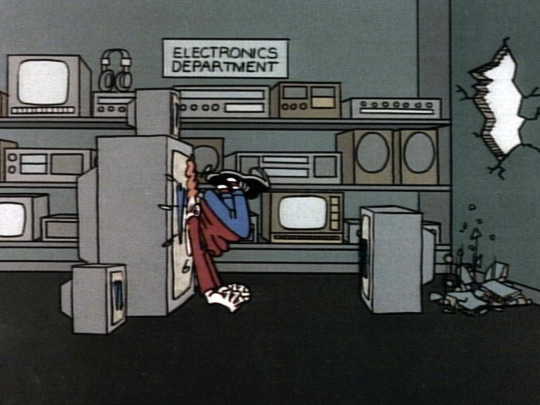

VH-1: Video Hits One 1989
Best of Original Cartoons
Fred/Alan, Inc. New York
VH1 has struggled for years for an identity, and even more, for a successful programming format. Fred/Alan worked with them from their launch in 1985, through at least three or four failed iterations until Alan and I closed the
company in 1992.
The one purely hand drawn, 2D animation we did forT them was in 1989. Fred/Alan creative director Bill Burnett had a fantastic idea. The target audience was baby boomers (like Bill, Fred and Alan were) and one of the baby boom media icons was the satire and humor publication MAD Magazine. Bill engaged their classic comic illustrator Don Martin to storyboard a VH1 commercial to a score that included the last chord of The Beatles' masterpiece "A Day in the Life."
Did it work? Creatively, that's a big "yes."
Ratings? Not so much. And so it goes.
VH1 television commercial 1989
Executive creative directors:
Alan Goodman & Fred Seibert
Writer/Creative director: Bill Burnett
Fred/Alan Producer: Tom Pomposello
Production company: The Ink Tank
The Ink Tank Executive Producer: JJ Sedelmaier
Director: Tony Eastman
.....
Pages 256 & 257 “The Best of Original Cartoons-Produced by Fred Seibert”
#7 The FredFilms Professional Library (Amazon)
#Best of Original Cartoons#VH1#1989#Alan Goodman#Bill Burnett#jj sedelmaier#RO Blechman#branding#advertising
0 notes
Photo
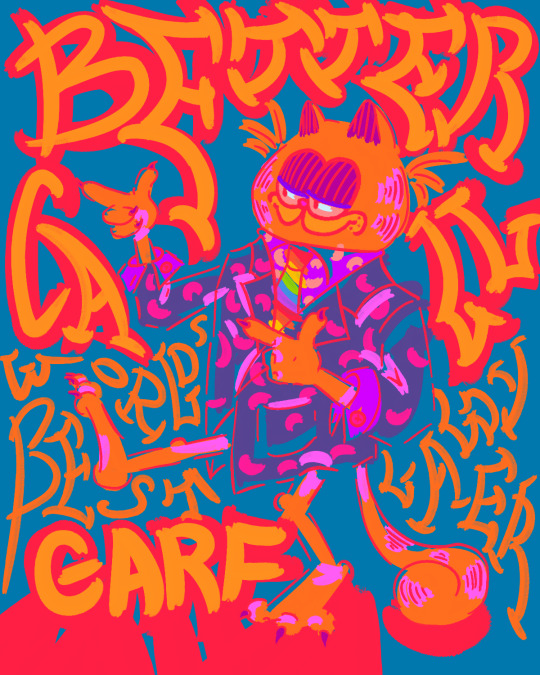
i’m contemplating doing a version of it with a suit being rainbow-coloured as well
#garf says#gay rights#and trans rights too#he doesn't have a gender cos to have gender one must have pants to store it in#garfield#saul goodman#better call saul#this show is such a masterpiece#had me bawling for the entirety of the last episode#fun fact the brush i use in this and any other garf drawing on my page is just a png of saul#alan draws
17 notes
·
View notes
Text
Ep102 Naughty Camelot Puns w/ Asabi Goodman! (AUS)
Spice it up for Mama, coz we're joined by Australia's hottest shooting-star, Asabi Goodman! Whilst in-transit between Baltimore and Chicago, this delectable expat diva joins host (and friend) Matt (in his debut as lead-host!) on the battlefield for 'Excalibur' by Grave Digger, before unearthing the 2023 Broadway revival of 'Camelot'.
Plus, we chat Hairspray's recent Aussie tour, Chicago's upcoming Aussie tour, Pitch Perfect in real life, Asabi's "spontaneous" ANZAC memorial, baking, Drag Race, and more nonsense than you can poke Arthur's sword at!
Socials!
Asabi: https://www.instagram.com/asabig -- https://www.asabigoodman.com
Be sure to catch Asabi in 'Chicago', touring Australia in 2023-24! https://chicagomusical.com.au/
Matt: https://www.instagram.com/mattyoungactor -- https://www.twitter.com/mattyoungactor
#Asabi Goodman#Hairspray#Chicago#Hairspray Musical#Chicago Musical#ChicagoAU#HairsprayAU#Camelot#Lerner and Loewe#Alan Jay Lerner#Frank Loewe#Matt Young#Matt Young Actor#Music#Comedy#Broadway#Metal#Heavy Metal#Musicals#Critique#Reviews#Musical Theatre#West End#Aussie#Podcast#Commentary#Prog Rock#Prog Metal#Progressive Metal#Thrash
2 notes
·
View notes
Text
s6 really has so many wild actors guest-starring in it: jason isaacs? kristin chenoweth?? christopher lloyd????
#ive forgotten someone....#last s was christian slater and john goodman#also ofc lily tomlin was introduced as a recurring which is still !!!!!!#and ofc: alan alda!#im watching the west wing
7 notes
·
View notes
Note
I'm going to contain myself on the jazz and big band, it will likely be a playlist later, but this is a good one
Jazz, swing, and big band music is a favourite genre of mine.
#sebastian's musical owls#you're instrumental#shameless0shenanigans#in the mood - glenn miller#sing sing sing (benny goodman) - alan silvestri
4 notes
·
View notes